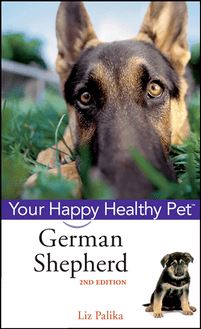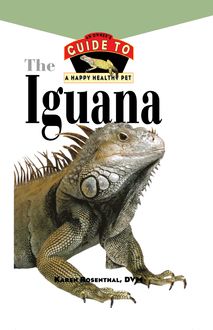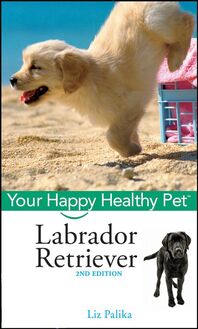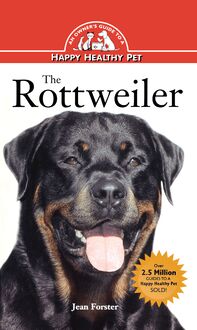The Greyhound , livre ebook
100
pages
English
Ebooks
2007
Vous pourrez modifier la taille du texte de cet ouvrage
Obtenez un accès à la bibliothèque pour le consulter en ligne En savoir plus
Découvre YouScribe en t'inscrivant gratuitement
Découvre YouScribe en t'inscrivant gratuitement
100
pages
English
Ebooks
2007
Vous pourrez modifier la taille du texte de cet ouvrage
Obtenez un accès à la bibliothèque pour le consulter en ligne En savoir plus
Publié par
Date de parution
31 août 2007
Nombre de lectures
3
EAN13
9780470252741
Langue
English
- feeding
- grooming
- housing
- health care
- what to expect from the pet
- basic training
PART ONE: Welcome to the World of the Greyhound.
1. What Is a Greyhound?
2. The Greyhound's Ancestry.
3. The World According to the Greyhound.
PART TWO: Living with a Greyhound.
4. Bringing Your Greyhound Home.
5. Feeding Your Greyhound.
6. Grooming Your Greyhound.
7. Keeping Your Greyhound Healthy.
PART THREE: Enjoying Your Dog.
8. Basic Training (Ian Dunbar, Ph.D., MRCVS).
9. Getting Active with Your Dog (Bardi McLennan).
10. Your Dog and Your Family (Bardi McLennan).
11. Your Dog and Your Community (Bardi McLennan).
PART FOUR: Beyond the Basics.
12. Recommended Reading.
13. Resources.
Publié par
Date de parution
31 août 2007
Nombre de lectures
3
EAN13
9780470252741
Langue
English
The
Greyhound
Howell Book House
Howell Book House
A Simon Schuster Macmillan Company
1633 Broadway
New York, NY 10019
Copyright 1998 by Howell Book House
All rights reserved. No part of this book may be reproduced or transmitted in any form or by any means, electronic or mechanical, including photocopying, recording, or by any information storage and retrieval system, without permission in writing from the Publisher.
MACMILLAN is a registered trademark of Macmillan, Inc.
Library of Congress Cataloging-in-Publication Data
Stern, Daniel Braun
The greyhound: an owner s guide to a happy, healthy pet/Daniel Braun Stern.
p. cm
ISBN: 0-087605-431-9 (hardcover)
1. Greyhounds. I. Tide. II. Series.
SF429.G8S74 1997
636.753 4-dc21
Manufactured in the United States of America
10 9 8 7 6 5 4 3 2 1
Series Director: Amanda Pisani
Assistant Series Director: Jennifer Liberts
Book Design: Michele Laseau
Cover Design: Iris Jeromnimon
Illustration: Laura Robbins and Jeff Yesh
Photography:
Front cover and puppy by Steve Nash
Back cover by Judith Strom
Joan Balzarini: 26
Paulette Braun/Pets by Paulette: 2-3, 11, 18, 27, 39
Ringpress/Steve Nash: 6, 9, 13, 14, 15, 17, 32, 33, 47, 54, 63, 64, 65, 66, 67, 68, 73
Judith Strom: 12, 19, 20, 22, 23, 25, 30-31, 43, 58, 60, 62, 72, 81
Toni Tucker: 5, 7, 50
Faith Uridel: 69
Production Team: John Carroll, Trudy Coler, Stephanie Hammett, Clint Lahnen, Dennis Sheehan and Terri Sheehan
Contents
part one
Welcome to the World of the Greyhound
1 What Is a Greyhound?
2 The Greyhound s Ancestry
3 The World According to the Greyhound
part two
Living with a Greyhound
4 Bringing Your Greyhound Home
5 Feeding Your Greyhound
6 Grooming Your Greyhound
7 Keeping Your Greyhound Healthy
part three
Enjoying Your Dog
8 Basic Training
by Ian Dunbar, Ph.D., MRCVS
9 Getting Active with Your Dog
by Bardi McLennan
10 Your Dog and Your Family
by Bardi McLennan
11 Your Dog and Your Community
by Bardi McLennan
part four
Beyond the Basics
12 Recommended Reading
13 Resources
part one
External Features of the Greyhound
chapter 1
What Is a Greyhound?
The Greyhound is an ancient breed of dog that was originally bred to hunt animals ranging from rabbits to gazelles. He belongs to a family of dogs known as sighthounds; they hunt by sight rather than by scent. Some of the Greyhound s commonly known cousins include the Whippet, the Afghan Hound and the Irish Wolfhound. The Greyhound s keen eyesight, coupled with his long legs and deep chest, allow him to run with great speed in pursuit of his prey.
Greyhound Organizations
Two organizations are involved in the registration of purebred Greyhounds: the American Kennel Club (AKC), which registers Greyhounds for showing, and the National Greyhound Association (NGA), which registers Greyhounds for racing. While both AKC and NGA Greyhounds are purebred, they have been bred to do two very different things. The result is that although they share many physical characteristics in common, they have differences, too.
The Show Greyhound
Let s start off with an examination of the show Greyhound. Dog shows are a relatively new invention having started in the mid-1800s. The Greyhounds who existed for thousands of years before then were bred to hunt and later to course. Coursing is a sport that pits two Greyhounds against each other in pursuit of the game, usually a rabbit. Coursing is practiced on an open field, and dogs are judged not only on speed but on agility, determination and concentration.
In a dog show, the Greyhound is judged on how close he comes to the breed standard .
When dog shows were first developed, the idea was to show off specimens that best exemplified the attributes of each breed. To win in the show ring, a Greyhound needed to show that he would be a worthy competitor on the field. He needed straight, muscular legs, a deep chest with great lung capacity and keen eyes capable of seeing small game on the horizon. The ideal Greyhound had to be streamlined.
As time passed, attention was given to other points of the dog such as the set of the ears, the size and the color. All of these points were drawn up into what is known as the breed standard. Dogs that come closest to the breed standard are the winners in the show ring.
In terms of popularity, the AKC registered 218 Greyhounds in 1996, ranking this breed as number 120 out of the 143 recognized breeds.
When Greyhounds are at attention their ears are semi-pricked .
The Standard
The standard describes the ideal Greyhound. Remember that no animal lives up to the standard in every way, although breeders keep striving to come as close to this description as possible. Greyhounds were among the earliest breeds shown at American dog shows. The first entry at Westminster Kennel Club show in 1877 included only eighteen Greyhounds.
Here is the AKC s breed standard for the Greyhound as written by the Greyhound Club of America. Comments that explain the standard in a little more detail follow.
H EAD
Long and narrow, fairly wide between the ears, scarcely perceptible stop, little or no development of nasal sinuses, good length of muzzle, which should be powerful without coarseness. Teeth very strong and even in front .
The overall effect should be one of refinement. Overshot or undershot jaws are to be avoided as are Roman noses or excessively wide or narrow skulls.
E ARS
Small and fine in texture, thrown back and folded, except when excited, when they are semi-pricked .
In repose Greyhounds possess so-called rose ears. Ears that are set permanently in a semi-pricked or pricked state are a fault.
E YES
Dark, bright, intelligent, indicating spirit .
Greyhound eyes should have a far-reaching, keen quality that reflects their superior eyesight.
N ECK
Long, muscular, without throatiness, slightly arched, and widening gradually into the shoulder .
The neck should indicate grace as well as strength with the curve being gentle. The neck should be neither too short nor too thick.
S HOULDERS
Placed as obliquely as possible, muscular without being loaded .
A Greyhound s shoulders should not have an excessively muscled appearance nor should they be flat or slab-sided.
F ORELEGS
Perfectly straight, set well into the shoulder, neither turned in nor out, pasterns strong .
If a Greyhound s forelegs turn in or out, the entire balance of the body is thrown off.
C HEST
Deep, and as wide as consistent with speed, fairly well-sprung ribs .
Again, a slab-sided appearance is to be avoided as is a chest that is too narrow or too wide.
B ACK
Muscular and broad, well-arched .
Well-arched without being roach-backed. There should be no evidence of a sloping topline or a sway-back.
The Greyhound s back is muscular and well-arched .
L OINS
Good depth of muscle, well-cut up in the flanks .
A meaty appearance is to be avoided. Long, lean and sinewy muscles are desired.
H IND Q UARTERS
Long, very muscular and powerful, wide and well-let down, well-bent stifles. Hocks well bent and rather close to ground, wide but straight fore and aft .
It is essential that the hind quarters reflect the power and speed of the Greyhound but also give a refined impression. The rear legs should be neither bowed nor cow-hocked.
F EET
Hard and close, rather more hare than cat feet, well-knuckled up with good strong claws .
The feet need to be upright and not flat or splayed.
T AIL
Long, fine and tapering with a slight upward curve .
C OAT
Short, smooth and firm in texture .
C OLOR
Immaterial .
W EIGHT
Dogs, 65 to 70 pounds; bitches, 60 to 65 pounds .
Points
Greyhounds are judged in the ring on an overall picture with the Scale of Points being as follows:
General symmetry and quality
10
Head and neck
20
Chest and shoulders
20
Back
10
Quarters
20
Legs and feet
20
TOTAL
100
Remember that at dog shows, dogs are being judged not only against the others of their breed but against the breed standard. A complete description of the AKC standard for the Greyhound is available by writing to the American Kennel Club, 5580 Centerview Dr., Suite 200, Raleigh, NC 27606-3390.
Judging for Speed
Greyhounds registered with the National Greyhound Association are judged by an entirely different standard, namely, speed. As long as it is ascertained that a particular Greyhound is the product of two purebred registered Greyhounds, then he, too, is eligible for registration. But, instead of pursuing life in the show ring, he is destined for life on the racetrack.
An AKC Greyhound has less muscular definition because he isn t competitive on the track .
Size, color, sex or conformation are of no interest to the racing authorities. However, it stands to reason that dogs who are the best physical specimens will also be the ones who have the best chances of succeeding at the track. Keep in mind that approximately 39,000 Greyhounds are registered each year with the NGA, and many thousands of them display both tremendous speed and great beauty.
Since the form of a dog in the show ring is supposed to reflect its function in the world, then a case can be made for NGA Greyhounds conforming closest to the original purpose of the breed. A dog with an excessively narrow chest, for example, would have less lung capacity and, hence, not have the endurance to run as fast or as long. And certainly one with cow-hock-shaped hind legs might well trip over himself.
AKC and NGA Greyhounds
In the end, it becomes a matter of preference. NGA Greyhounds tend to be smaller and, after their training at the track, highly muscled and limber. AKC Greyhounds are often larger, have less defined muscles and are less competitive at field events. Attributes of both NGA and AKC Greyhounds are the combination of both nature and nurture. The qualities of either lineage can be emphasized or not, depending on the pla














